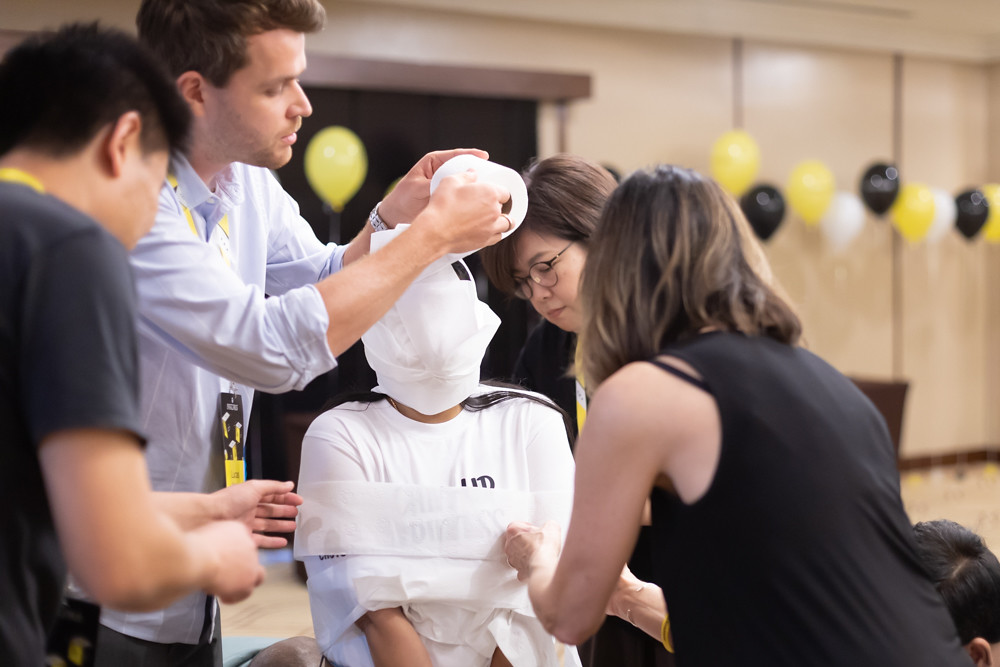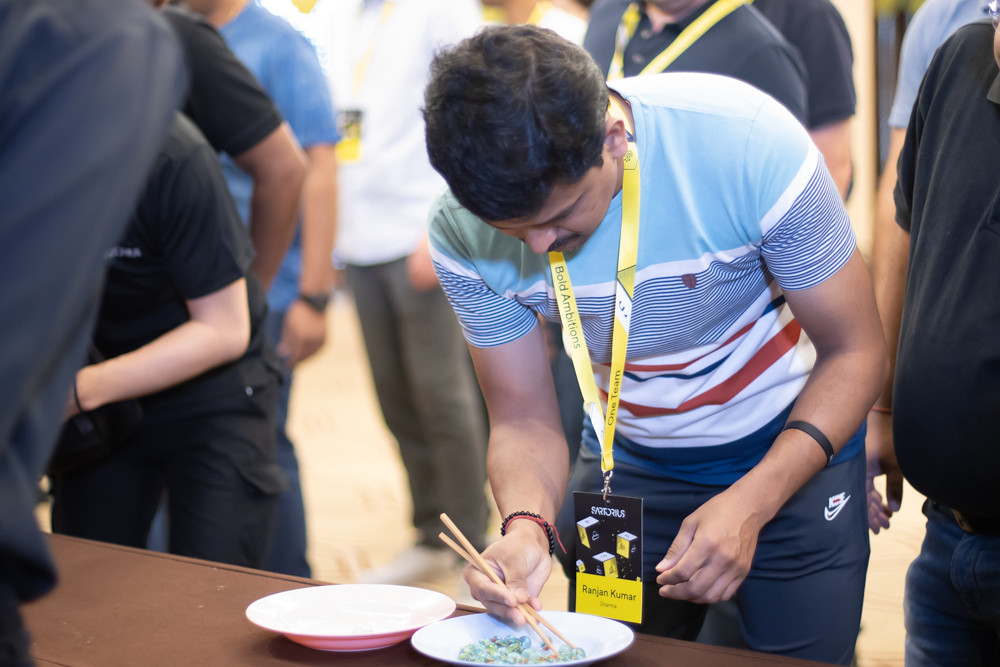Let’s get silly! Teams compete with each other in a series of short and active games in multiple rounds that last for one minute only. Each game is a bit ridiculous by design, use simple everyday materials and can be played by anyone regardless of skill. The team at the end with the most winning rounds takes home the prize!

- To improve communication, delegation and work flow within the team
- To improve trust, planning and leadership skills
- To get to know one another in a fun and exciting setting
- To work on cooperation and understanding yourself, your colleagues and your team
- To consider ways in which these skills can be translated into a work environment

Teams compete in a series of challenging and fun team building games based on the minute to win it TV show theme. For each activity, teams choose 1 or more participants to compete over rounds in a competitive team versus team format with each person taking part in every game. Teams aim to collect as many points as possible with the highest score awarded to the best team. After the last game the scores are added up by the lead facilitator during the event de-brief and the winning team is announced.
Minute to win it games are conducted in a team versus team format in which teams rotate through the various games which are usually competitive sometimes cooperative, some physical others more mentally challenging but each activity requires full participation of everyone in the team. The event starts with a couple of ice-breakers.
Below is a list of some example games from Minute To Win It:
This Blows: Participants blow plastic cups from a table with the air from an inflated balloon
Face the cookie: Participants move a biscuit that’s laying on their eye into their mouth without touching it with their hands
Junk in the Trunk: Participants strap a tissue box with ping pong balls around their waist and wiggle until they’re all out
Nose Dive: Participants transport cotton balls from one table to another with their nose by dipping it into vaseline first
Separation Anxiety: Participants separate mixed colored M&Ms into cups for each color
Extreme Hanky Panky: Participants take tissues from a box one by one until it’s empty
String Dragon: Participants hold two strings, one in each hand and rotate their arms until the whole ball of string is around their arms
Stay on key: Participants hit a key that’s laying on the edge of a table until it falls into a cup
Don’t blow the joker: Participants blow all the cards from a deck from the table except the joker
How’s it hangin’?: Participants kick two mandarins from A to B with a banana hanging by a string between their legs
Backflip: Participants balance two pencils on the palm of their hand to then throw and grab it in the air, 6 rounds with 2 pencils added each time
Glass Road Trucker: Participants lay a number of bottle upside down with a shot glass at the end to then blow a ping pong ball from the first bottle to inside the glass
Stack Attack: Participants stack 36 cups into a pyramid, and then bring the cups back to one single stack.
And many more…




The location for the event is usually at the client’s hotel or own office space.
After each game scoring is given to each team and the sub-total is announced until the last game. Final scoring is done during the event debrief and the team with the most points is the winner.
Insurance and instructor supervision are important safety factors with any event, and in the event of an emergency, transport and medical backup will be standing by.
The event briefing and debrief takes place at the activity location. The group is separated into teams and introduced to their facilitators, then the lead facilitator gives an introduction of the event including (safety) instructions and objectives for the activity.
During the debrief, the facilitator discusses the event challenges and asks each team questions to assess their performance before announcing the winning team (if applicable).
Briefing and debrief usually take around 15 minutes each but can be extended for more in-depth analysis of team performance.
The half day program takes up to 4 hours and the full day program up to 8 hours.
09.00 am – Event brief by lead facilitator
09.15 am – Ice breaking activities
09.45 am – First Challenge
10.15 am – Second Challenge
10.45 am – Third Challenge
11.15 am – Break
11.30 am – Fourth Challenge
12.00 pm – Final Challenge
12.30 pm – Event de-brief, awarding ceremony and group photo
01.00 pm – End of the program
Max People
Hours
Challenges
People per Team
Below are three options for Minute To Win It with different inclusions and rates all tailored to best match your budget and requirements. The Bronze option is a fixed program with few inclusions but the Silver and Gold packages include extra benefits and allow selection of some or all challenges. On the pricing page we offer further optional extras. The full day activity will have up to double the number of challenges.
All options include
One Western lead event facilitator
Ice-breaking activities
BRONZE
5 Minute To Win It Games
One facilitator per 40 pax
SILVER
6 Minute To Win It Games
One facilitator per 20 pax
Bronze inclusions+
+Prizes for winning team (local handicraft or medals)
+Free photos taken by facilitator
+Pre-event meeting
GOLD
7 Minute To Win It Games
One facilitator per 20 pax
Silver inclusions+
+Short presentation on theory model
+Handouts on theory model
+Colored headbands to use




